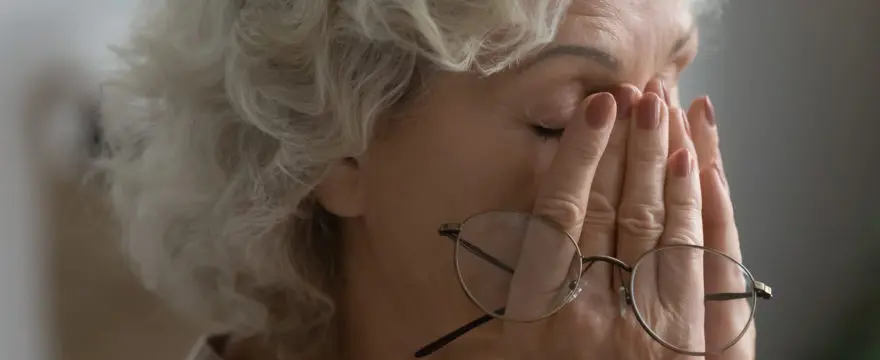Beovu (brolucizumab-dbll) is a drug used to treat wet macular degeneration. It’s fairly new to the ophthalmology market, but has already created quite a concern with doctors and health care providers.
Manufactured by Novartis, Beovu was first approved to treat wet macular degeneration (wet AMD) in October 2019. Wet AMD is a chronic eye disorder and one of the biggest contributors to vision loss in people aged 50 years and older. It causes abnormal blood vessel growth in the eye. This causes a leak of fluid (or blood) into the macula, and blocks the growth and formation of new blood vessels.
The macula is found in the retina which is responsible for central vision. Wet AMD can come on pretty quickly, and if it’s not treated promptly, can cause rapid deterioration.
According to the Mayo Clinic, here is a list of symptoms that may be connected to wet AMD:
- Visual distortions, such as straight lines seeming bent
- Reduced central vision in one or both eyes
- Decreased intensity or brightness of colors
- A well-defined blurry spot or blind spot in your field of vision
- A general haziness in your overall vision
- Abrupt onset and rapid worsening of symptoms
So where does Beovu come in and why should you be concerned?
Beovu is considered an anti-VEGF treatment, or anti-vascular endothelial growth factor. Medications that fall under this category help block growths that contribute to wet AMD. They are also used to help treat certain cancers.
The way Beovu works is by intravitreal injection. This is basically a shot administered into the eye; specifically injected into the vitreous, which is near the retina in the back of the eye.
Beovu is intended to be taken every three months. This was a unique way Novartis was able to market Beovu, as the frequency of its competition (Regeneron’s Eylea) requires patients to come in once a month.
Beovu Under Scrutiny from Professionals
Yet, in early 2020, a group of physicians from the American Society of Retina Specialists (ASRS) issued a note to its members warning about a concerning trend of retinal vasculitis in patients taking Beovu.
A small study found that 11 out of 14 patients experienced occlusive retinal vasculitis after Beovu injections, which can lead to permanent vision loss. So far, this is not a side effect of other anti-VEGF drugs such as Eyelea, Avastin, or Lucentis.
Another study, based on the note from ASRS, dug a little deeper into the allegations. In it, they found that symptoms of occlusive retinal vasculitis after being injected with Beovu included blurry vision, floaters, pain, redness, and scotomas.
The small study evaluated 26 eyes from 25 patients. The majority of them were female (88%) with a mean age of 79 years old. The study featured in Retina Times can be requested from the ASRS website, here.
After the inflammation to Beovu was treated, some of the patients were injected with Eylea (the anti-VEGF that’s dominated the wet AMD market) and their issues subsided.
Due to the damaging nature of Beovu, the Food and Drug Administration issued a required label change. The side effects of Beovu now include endopthalmitis, retinal detachment, retinal vasculitis, and/or retinal vein occlusion.
A spokesperson from Novartis said it would be engaging in “an external safety review committee to further evaluate these post-marketing cases” as well as have the company conduct an internal assessment.
In an article featured in the American Journal of Ophthalmology in May 202, the author said, “Brolucizumab is not the only drug that can be used for the treatment of eAMD. In the face of the known risk, its use is unwarranted.”
Do You Have a Beovu Lawsuit? Contact a Lawyer Today.
Have you had any of the above side effects after taking Beovu injections? Have you been diagnosed with endopthalmitis, retinal detachment, retinal vasculitis, retinal vein occlusion, or do you suspect that Beovu has caused eye damage or some other sort of eye problems? If so, you should contact a lawyer who is handling Beovu lawsuits. You may be entitled to financial compensation for your injuries.
